Glacier National Park is located in Montana’s Rocky Mountains right at the US-Canada border. It’s often called the “Crown of the Continent” and is one of the most photogenic of all the national parks. With the park’s abundance of beautiful landscapes and wildlife, it’s truly a paradise for nature lovers.
Why Visit Glacier National Park?
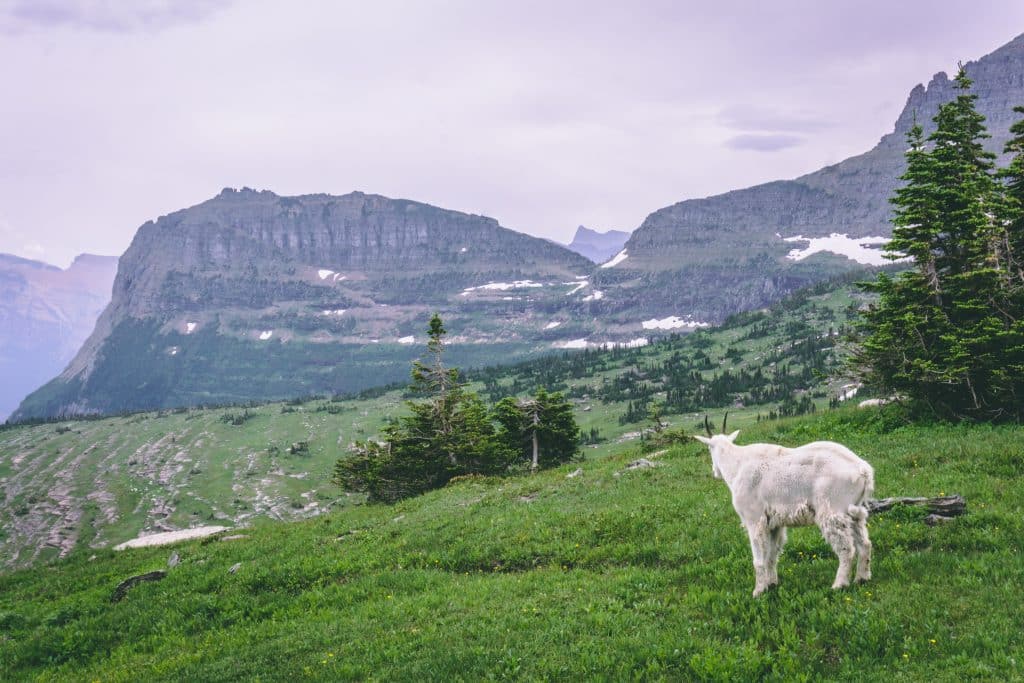
Photo Credit: Brandon Jean on Unsplash
If the park photos alone don’t convince you to visit Glacier National Park, know that it’s even more stunning in person. The park is home to some of the most pristine forests, meadows, mountains, and lakes. In fact, there are 762 lakes in Glacier National Park, only 131 of which are named.
It’s also home to 26 glaciers and 175 mountains! That’s not to mention the wildlife you’re guaranteed to see with 71 species of mammals roaming the park. Mountain goats are the official symbol of the park, and bears are spotted so often that you’ll want to be armed with bear spray at all times.
The campgrounds near the Apgar Visitor Center are large and offer an excellent basecamp for exploring the park. From the campground, it’s a short walk or bike ride to the village, where there’s a small store, gift shop, restaurant, vendors for renting kayaks, and the beach on Lake McDonald, which is one of the park’s best locations for sunset watching.
In addition to its natural beauty, Glacier National Park has other unique qualities that set it apart from other parks. It has over 300 historical structures that are on the National Register of Historic Places.
From chalets and hotels to visitor centers and barracks, you’ll feel like you’re in Europe when you visit these buildings. The park also neighbors one of Montana’s most popular ski towns, Whitefish. It’s definitely worth a visit to stroll down the main street, check out the shops, and grab a bite to eat.
You can also enjoy the public beach at Whitefish Lake during the summer. If you’re feeling extra adventurous, you can cross into Canada and visit Waterton Lakes National Park.
When to Visit
Technically, Glacier National Park is open year-round, but road conditions and accessibility vary dramatically by season. In fact, only ten miles of Going-to-the-Sun Road are open year-round. Typically, the road opens in late June and closes in October.
Let’s go season-by-season to help you decide when to visit the park.
Glacier National Park in the Spring
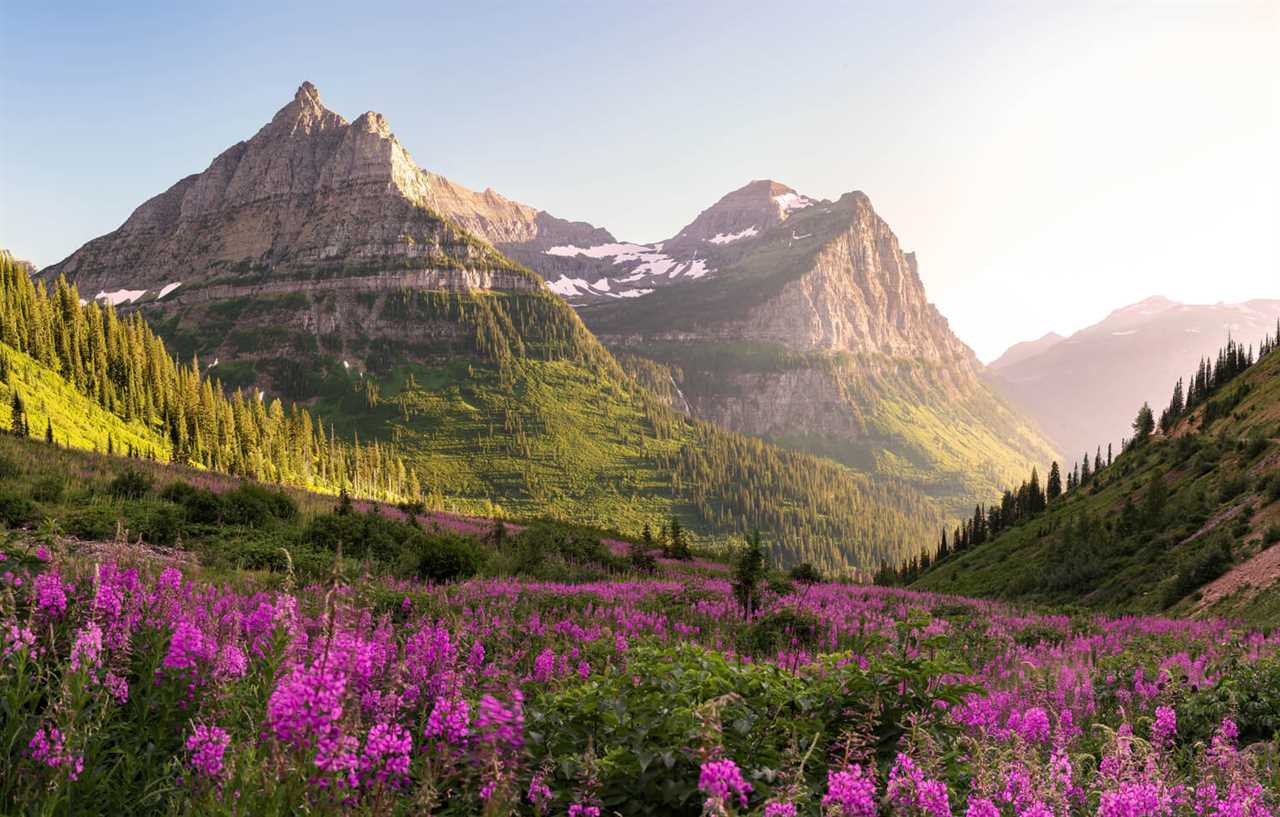
Photo by TheBigMK via Shutterstock
While spring is the best time to visit many other national parks, many of the facilities in Glacier remain closed well into the spring. Seasonal closures depend on how much snow the park received during the winter. Late snows can keep facilities closed into early to mid-June.
Glacier National Park in the Summer

Photo by Fly Free Art via Shutterstock
As you can imagine, summertime in the park is extremely crowded. Unless you’re okay with only accessing certain parts of the park and braving the harsh conditions, you’re better off tolerating the crowds and visiting during the summer months.
Glacier National Park in the Fall
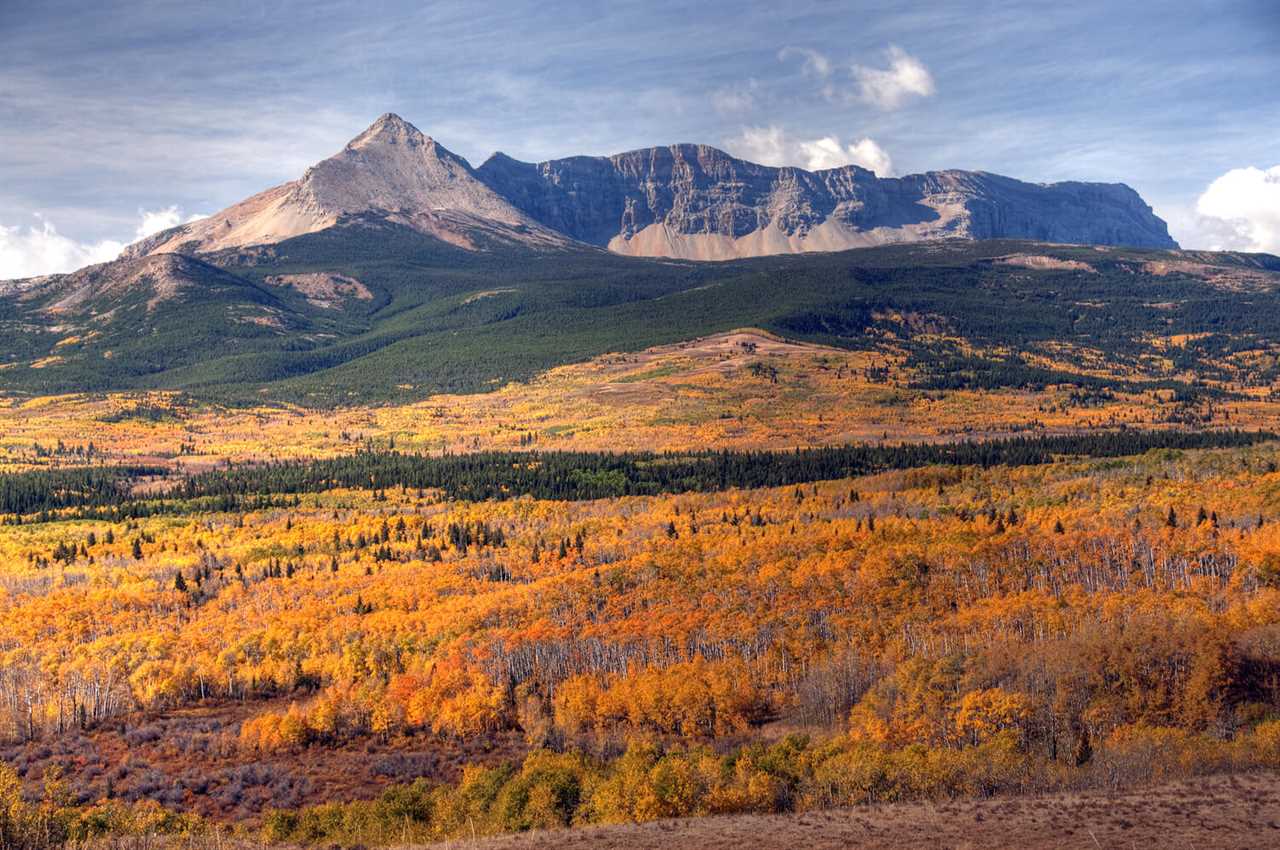
Photo by Krishna Wu via Shutterstock
Like spring, you can find a little more peace and quiet earlier or later in the season. Overnight temperatures start dropping close to freezing by late September, and campground facilities will also begin to close around this time.
Glacier National Park in the Winter
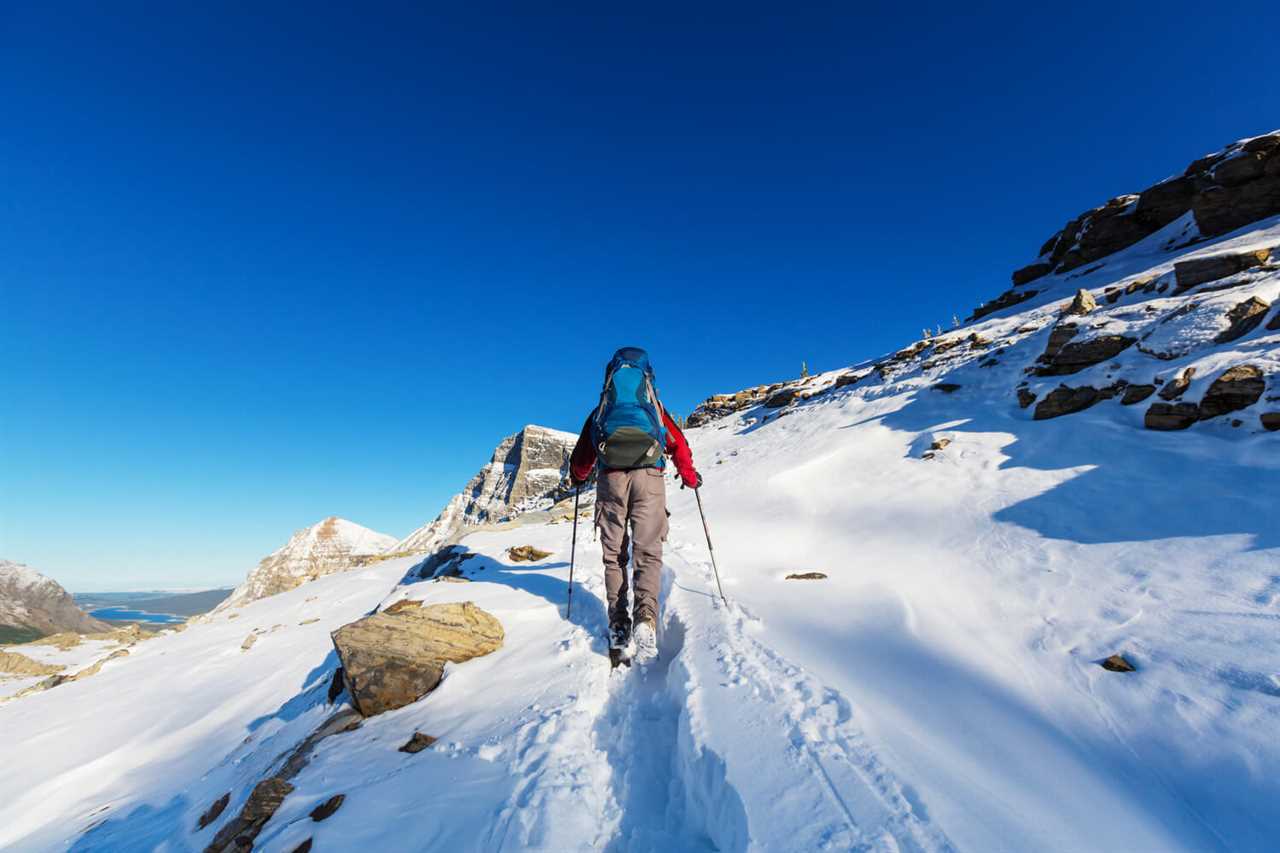
Photo by Galyna Andrushko via Shutterstock
Winters are cold, and snow blankets much of the park in northern Montana. Some areas of the Apgar and St. Mary’s campgrounds remain open for primitive camping, but you must be entirely self-sufficient to camp from October through May.
Visit the National Park Service’s weather page for more information on current conditions, seasonal temperature and precipitation averages, and more.
Where to Stay in Glacier National Park
The park has 13 drive-in campgrounds with over 1,000 sites to choose from. Most of the campgrounds are first-come, first-served, except for Fish Creek, St. Mary, and parts of Many Glacier and Apgar. Some are better for RV camping than others.
Consider staying a few days on the east side and then moving to the west side for a few more days. This will allow you to enjoy the whole park without having to do much driving.
Check Campground Status for detailed information about each campground, including their fees, amenities, availability, and RV accommodations. Here are all the campsites in Glacier National Park:
Reservation Campgrounds
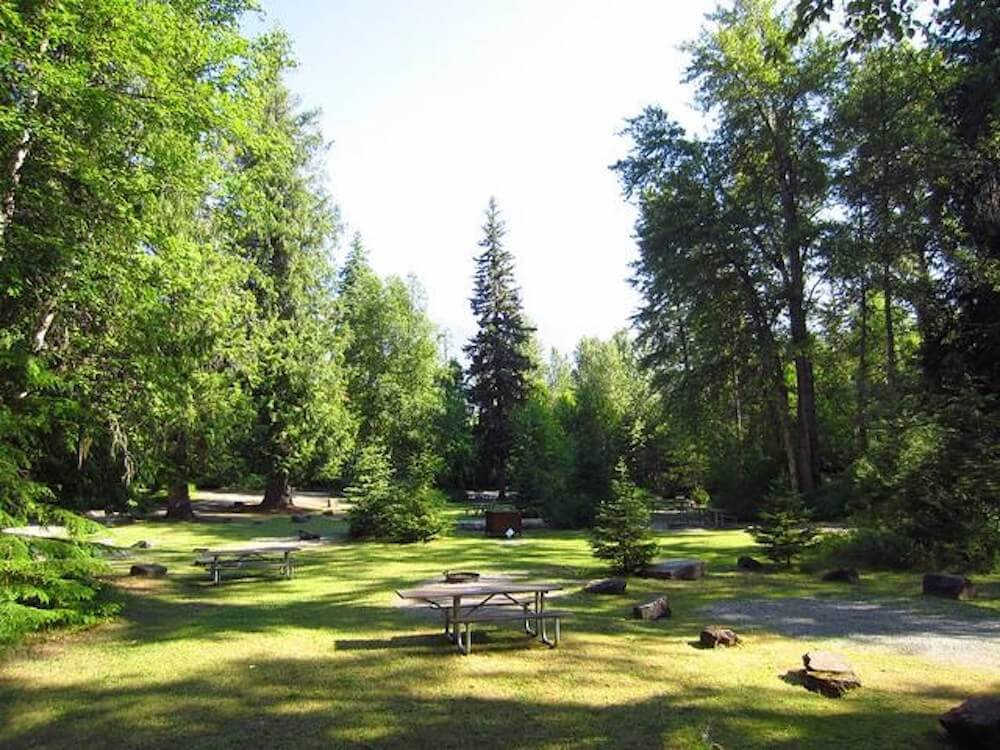
Sprague Creek Campground Photo by NPS
- Apgar Campground: RV and Trailer Max Length = 40 feet
- Fish Creek Campground: RV and Trailer Max Length = 35 feet
- Many Glacier Campground: RV and Trailer Max Length = 35 feet
- St. Mary Campground: RV and Trailer Max Length = 40 feet
- Sprague Creek Campground: Max Vehicle Length = 21 feet. Trailers are not recommended.
Get more information about reserving a campground in Glacier National Park.
First-Come, First-Served Campground
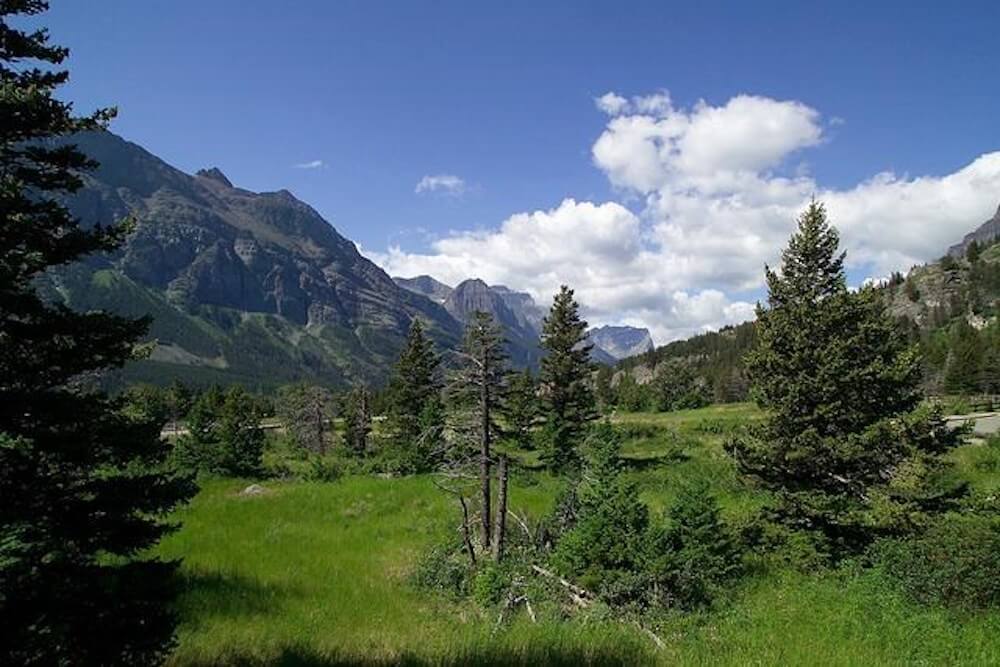
Rising Sun Campground Photo by NPS
- Rising Sun Campground: RV and Trailer Max Length = 25 feet
- Two Medicine Campground: RV and Trailer Max Length = 35 feet
- Avalanche Campground: Closed for 2022 season.
- Bowman Lake Campground: RVs and trailers are not recommended. May be accessible to truck campers, depending on road conditions.
- Cut Bank Campground: RVs and trailers are not recommended. May be accessible to truck campers, depending on road conditions.
- Kintla Lake Campground: RVs and trailers are not recommended. May be accessible to truck campers, depending on road conditions.
- Logging Creek Campground: RVs and trailers are not recommended. May be accessible to truck campers, depending on road conditions.
- Quartz Creek Campground: RVs and trailers are not recommended. May be accessible to truck campers, depending on road conditions.
Learn the best ways to secure first-come, first-served campsites.
Good Sam Parks Nearby

West Glacier RV Park Photo by Good Sam
If you cannot secure a campsite inside the park, you still have plenty of options. You can find several RV parks and campgrounds in nearby cities. Here are some of your best options:
- West Glacier RV Park & Cabins: Located in West Glacier, MT, about 10 minutes from the Apgar Visitor Center.
- Mountain Meadow RV Park & Cabins: Located in Hungry Horse, MT, about 20 minutes from the Apgar Visitor Center.
- Mountain View RV Park: Located in Columbia Falls, MT, about 30 minutes from the Apgar Visitor Center.
- Glacier Peaks RV Park: Located in Columbia Falls, MT, about 30 minutes from the Apgar Visitor Center.
How to Get Around Glacier National Park
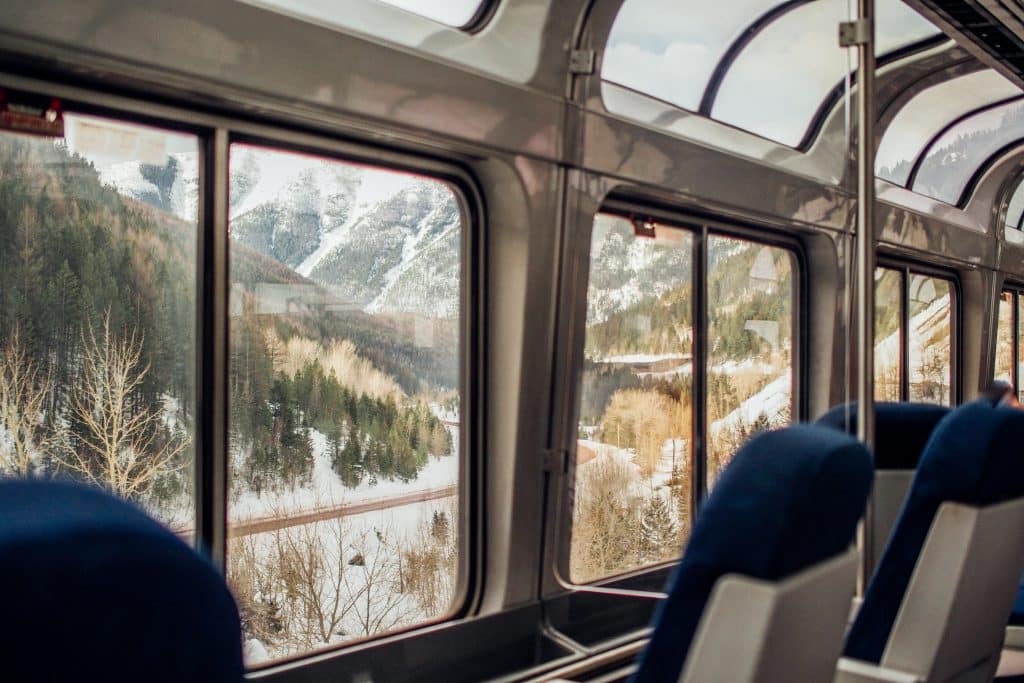
Glacier National Park is in the northwest corner of Montana and has four different entrances: the West Entrance, St. Mary, Two Medicine, and Many Glacier. It’s also broken into five districts: Lake McDonald, Many Glacier, North Fork & Goat Haunt, St. Mary, including Logan Pass, and Two Medicine.
To enter through the west entrance, you’ll take Highway 2 north 33 miles from Kalispell to West Glacier. The other three entrances can be reached by taking Highway 89 about 125 miles north from Great Falls to Browning. You’ll then follow the signs to the different entrances.
Amtrak’s Empire Builder train line stops year-round at West Glacier and seasonally at East Glacier. Glacier National Park Lodges offer shuttles to Amtrak passengers from the train depot.
So, if you’d rather leave the transportation up to someone else, this is a great option. You can take the seasonal hiker’s shuttle to get to trailheads or hop on the buses and shuttles that run along Going-to-the-Sun Road.
Whether you choose to drive yourself around the park or utilize the park’s tours and shuttles, you’ll want to be sure to plan ahead. Make reservations, check road conditions, and be prepared for busy parking lots and traffic.
Get more info on the free shuttle schedule and shuttle stops throughout the park.
Places to Go
Once you’re in the park and you have your RV basecamp set up, here are a few of the best places to visit during your stay:
The Visitor Centers
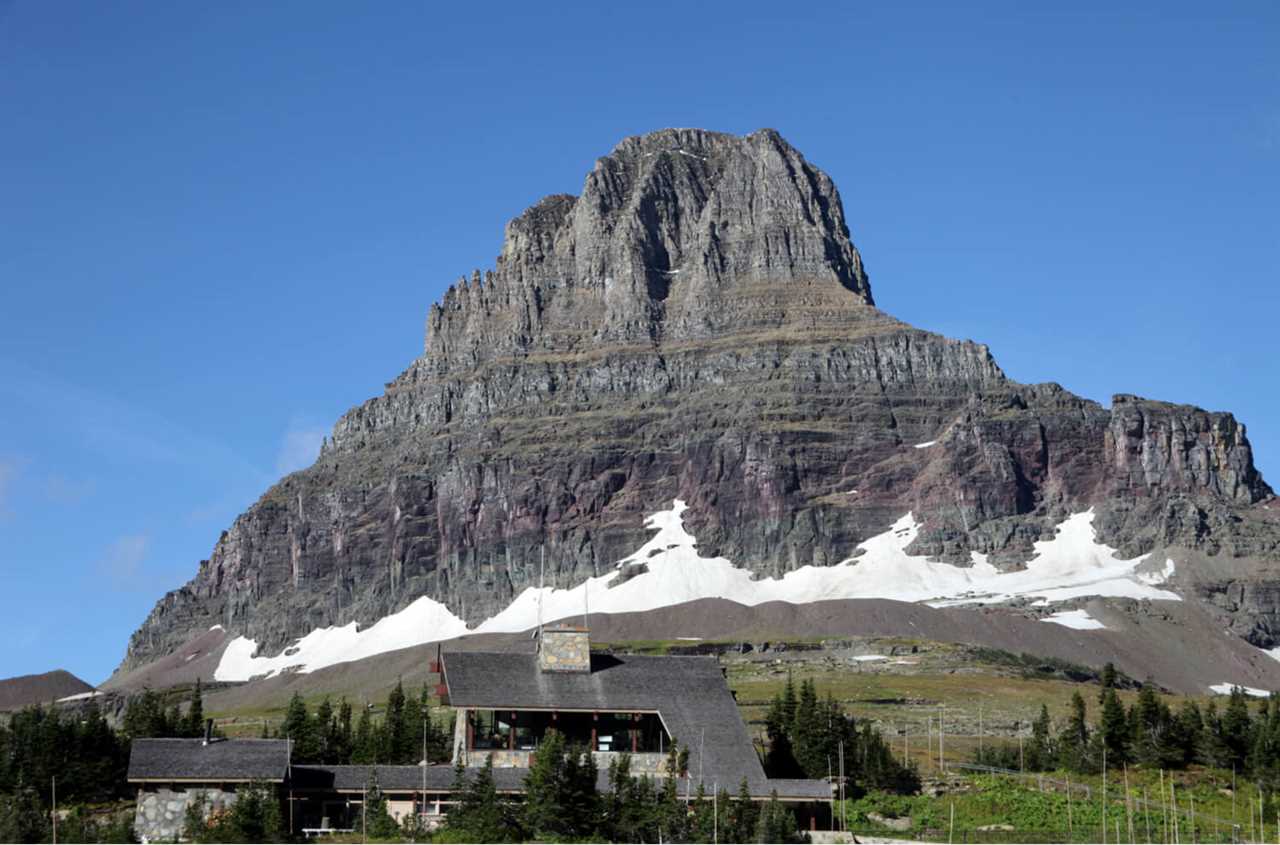
Logan Pass Visitor Center Photo by Autumn’s Memories via Shutterstock
It’s the most logical first stop on any visit to a new national park. You can pick up maps, grab memorabilia, and, perhaps most importantly, talk to rangers about current conditions, trail closures, and more.
Due to Glacier’s extreme weather conditions and dangerous wildlife, it’s not uncommon for roads and trails to be closed. The park rangers will be able to give you the best advice on what to do inside the park based on the time of year and your needs.
There are three visitor centers in Glacier National Park. The Apgar Visitor Center is on the west side, the St. Mary Visitor Center is on the east side, and the Logan Pass Visitor Center is at the highest point on Going-to-the-Sun Road.
Lake McDonald
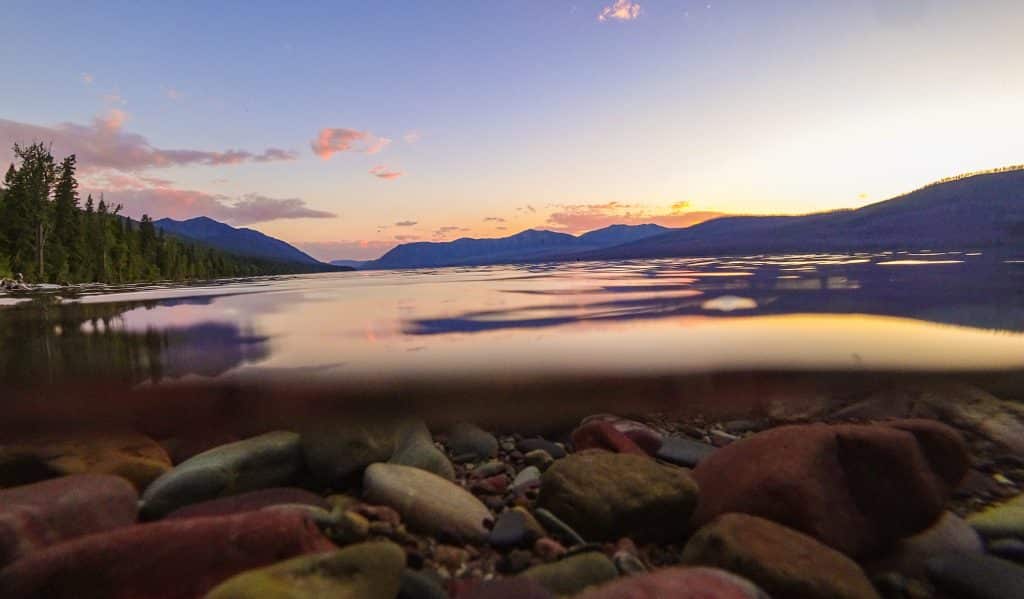
Photo Credit: Follow Your Detour
Lake McDonald isn’t just your average lake, and because it’s so easy to access, you won’t want to pass it up. The best time of day to visit the lake is early in the morning to witness its glass-like water and reflection or in the evening for one of the best spots to watch a sunset in the park.
It’s the largest lake in the park, but what makes Lake McDonald even more special are the colorful pebbles that lie underneath it and along its shore. It’s an especially great spot for photographing sunrises and sunsets.
St. Mary Lake
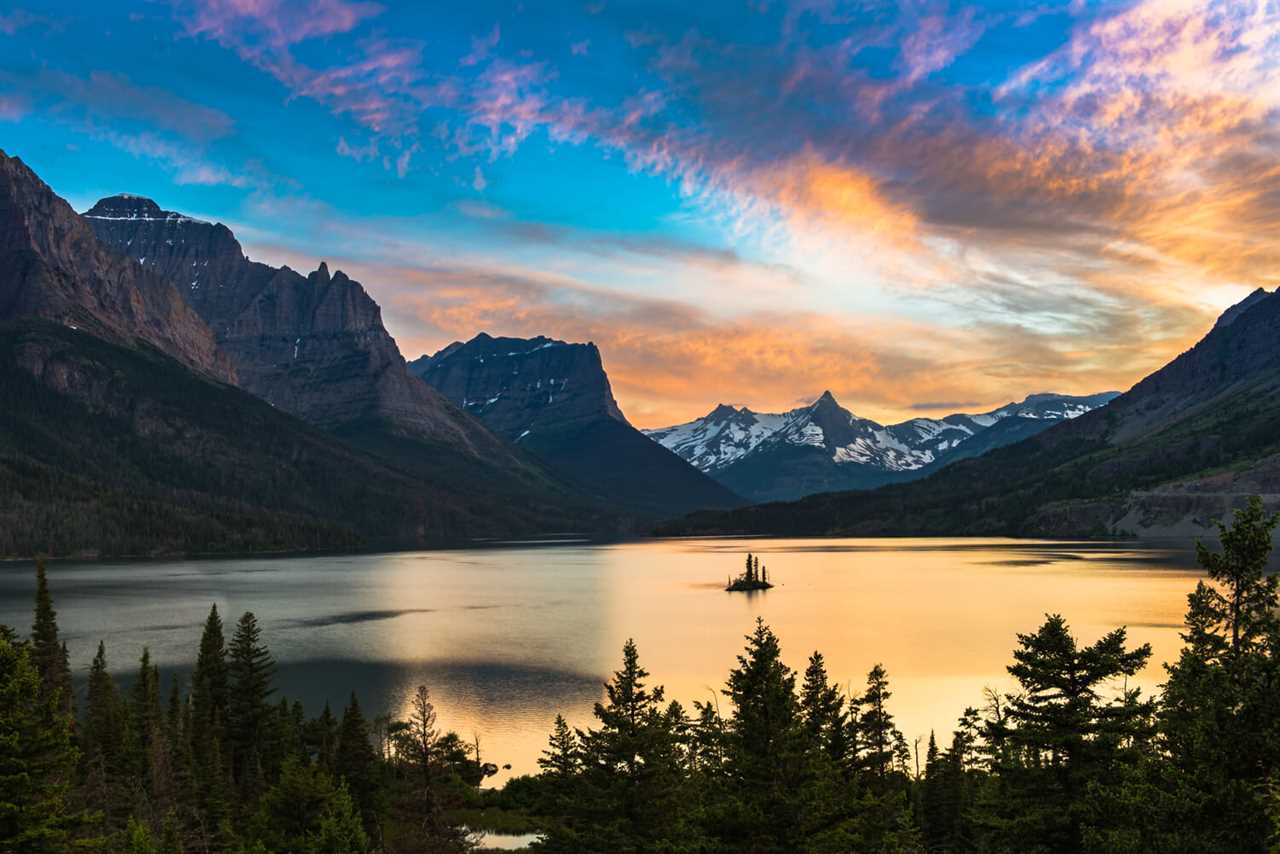
Photo by Pung via Shutterstock
St. Mary Lake is to the east side of the park what Lake McDonald is to the west. It’s a massive lake that covers an area of 6.13 square miles, which makes it the second-largest lake in the park. Boat tours guided by Glacier Park Boats can be reserved to spend a day exploring this beautiful body of water.
Polebridge
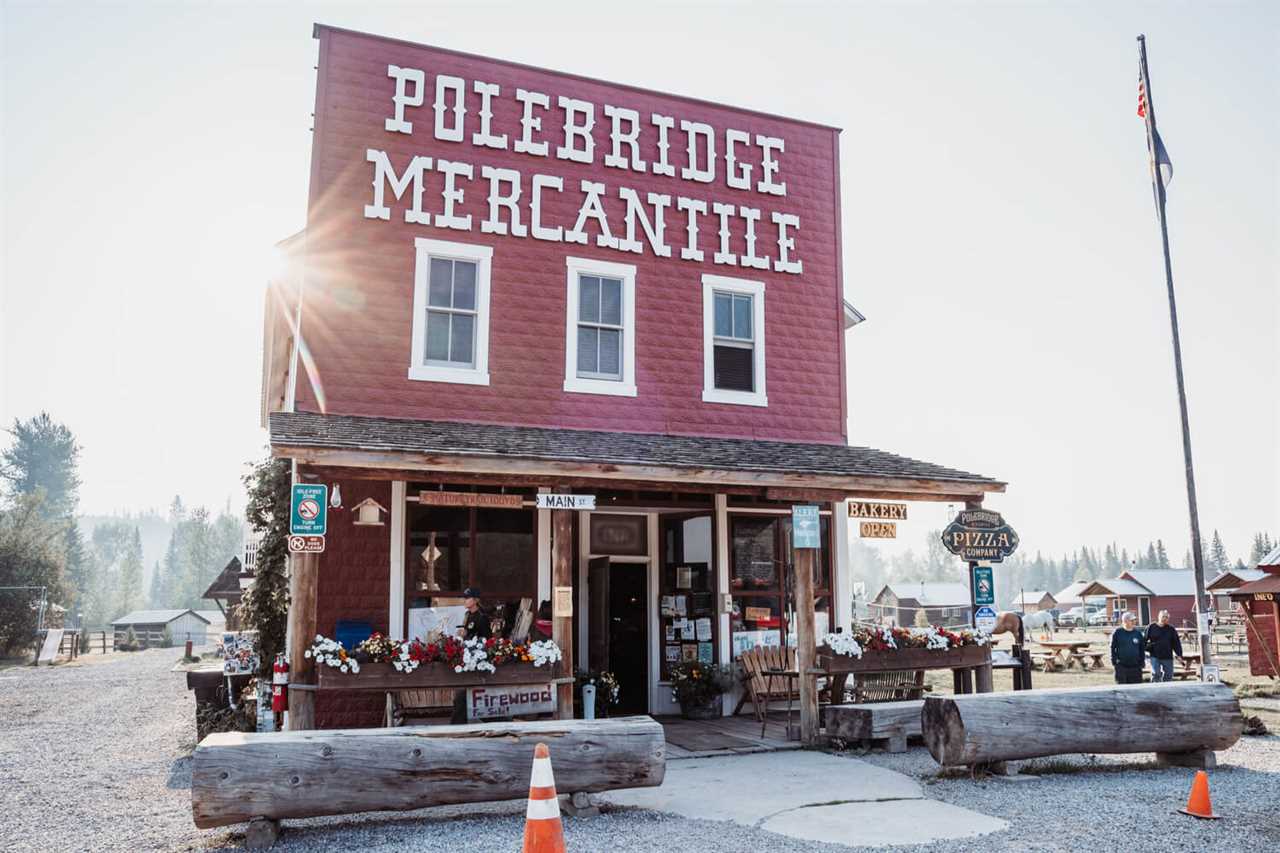
Photo by melissamn via Shutterstock
This is one of the most off-the-beaten-path locations in the park, but it boasts a quaint vibe and some interesting history. The store is known for its delicious baked goods, and there’s a saloon open seasonally for refreshing local beverages.
It’s also nestled right along the North Fork of the Flathead River and an essential stop on the way to Bowman Lake, Kintla Lake, and other destinations in the northern part of the park.
Things to Do in Glacier National Park
With over a million acres, there are a lot of activities to enjoy in Glacier National Park. Start with these fun things if it’s your first visit.
Drive Going-to-the-Sun Road
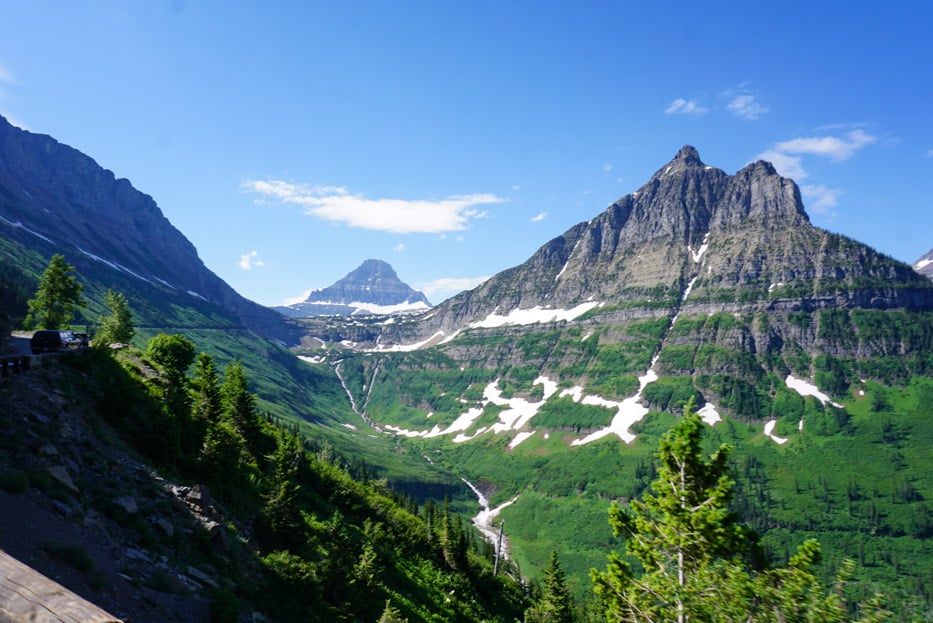
If you only have time to do one thing in the park, driving the Going-to-the-Sun Road is a MUST. It takes at least two hours to drive the full 50-mile road, but chances are it will take longer with multiple stops for photos, short hikes, and bathroom breaks.
It’s one of the most beautiful drives in the US and takes you up and over the striking mountains that run north-south through the park. It’s truly a modern marvel, with spectacular views around each corner.
There are several stops along the drive, but you can also enjoy waterfalls, vistas, and wildlife right from your car window. Remember that only vehicles under 21 feet in length, 8 feet wide, and 10 feet tall are allowed on the Going-to-the-Sun Road due to how narrow and dangerous it gets.
There are no gas stations inside the park, so be prepared. If you’d rather leave the driving to someone else, you can use Glacier’s Shuttle System or hop on a famous Red Bus Tour. With special precautions, you can even ride your bike along Going-to-the-Sun Road.
Go Hiking
This is the most obvious thing to do in the park, with over 700 miles spread out along 151 trails. Glacier arguably has some of the best hikes in the country, and there are trails for all skill and fitness levels.
Here are a few of the most popular hikes in the park:
Avalanche Lake
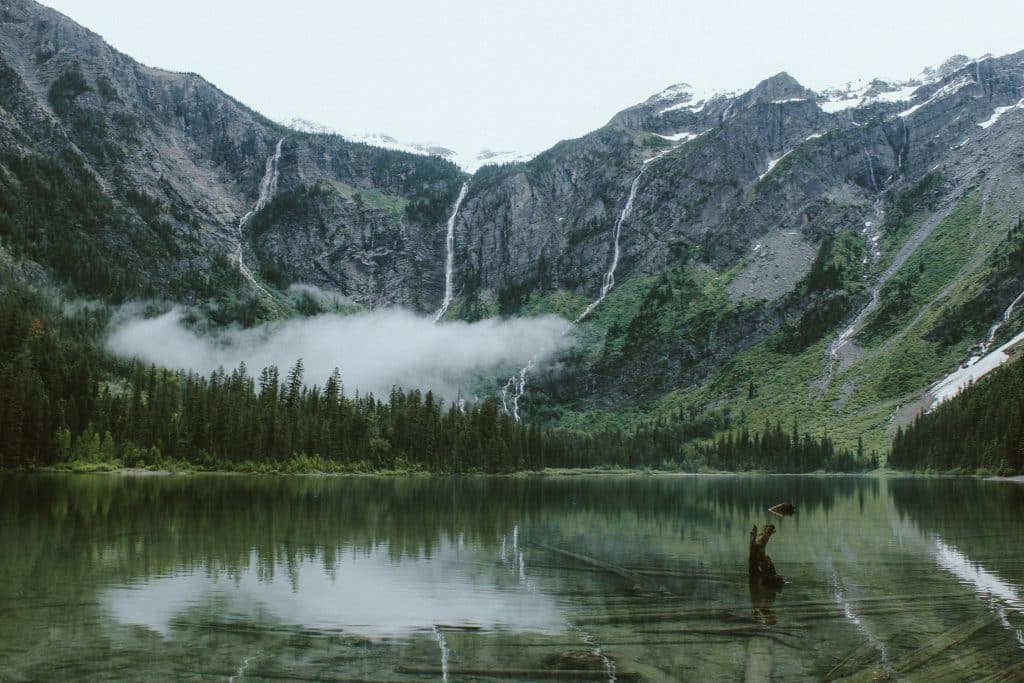
Photo Credit: Linh Pham on Unsplash
Roughly 4.6 miles round-trip with 500 feet of elevation gain. Easy to moderate.
Avalanche Lake is a popular hike because it’s convenient, fairly moderate, and leads to an absolutely stunning emerald-colored landscape! The lake is fed by waterfalls pouring off the Sperry Glacier.
The lake has a large beach area with benches, so you’ll have plenty of time to soak in the scenery. If you visit on a calm day, the reflection in the water will make it hard to know where the water ends, and the mountains begin.
Hidden Lake

Photo by Pung via Shutterstock
About 5.2 miles round-trip with 460 feet of elevation gain to the overlook and a 780-foot elevation drop from the overlook to the lake. Moderate.
This is one of the park’s most heavily trafficked trails, but it’s a great hike for all ability levels. You can either hike the entire distance to the lake or shorten the hike by stopping at the overlook.
The trailhead is behind the Logan Pass Visitor Center and is often snow-packed into July. While the snow adds to the excitement and fun, it can also be challenging and tiring. However, the views from the top are worth it.
You’ll be rewarded with panoramic views of the lake and Bearhat Mountain. You’ll also be able to see Mount Cannon, Fusillade Mountain, Gunsight Mountain, and Sperry Glacier. Mountain goats and grizzly bears are very common in the area, so heed any warning signs or advice from park rangers on-site.
Grinnell Lake
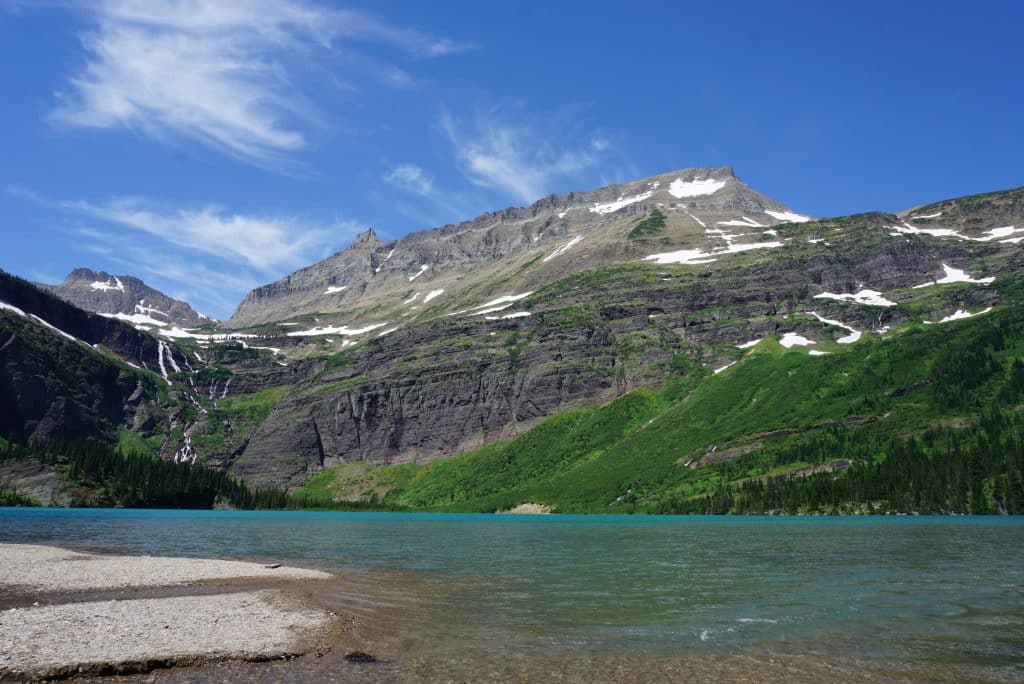
Photo Credit: Follow Your Detour
About 6.8 miles round-trip with a 60-foot elevation gain. Moderate. Shortened to 2.2 miles round-trip if you use the concession boat from the hotel, but fees apply.
Turquoise waters, wildlife viewing, and the option to take a boat across Swiftcurrent and Josephine Lakes make this hike unique and memorable. The trail begins at the beautiful Many Glacier Hotel, where you can walk to the dock and hop on a boat to shave off several miles of the hike.
You’ll also get a different perspective from the water and enjoy an interpretive talk. Be sure to reserve the boat ride at least a few days, if not weeks in advance, as tickets sell out quickly during the high season.
After the boat ride, the shaded trail leads to one of the most turquoise and most photographed lakes in the park. Dip your feet in freezing cold water coming straight from Grinnell Glacier. When the rest of the trail is open in late summer, you can continue a couple more miles to the Grinnell Glacier Overlook.
Boating
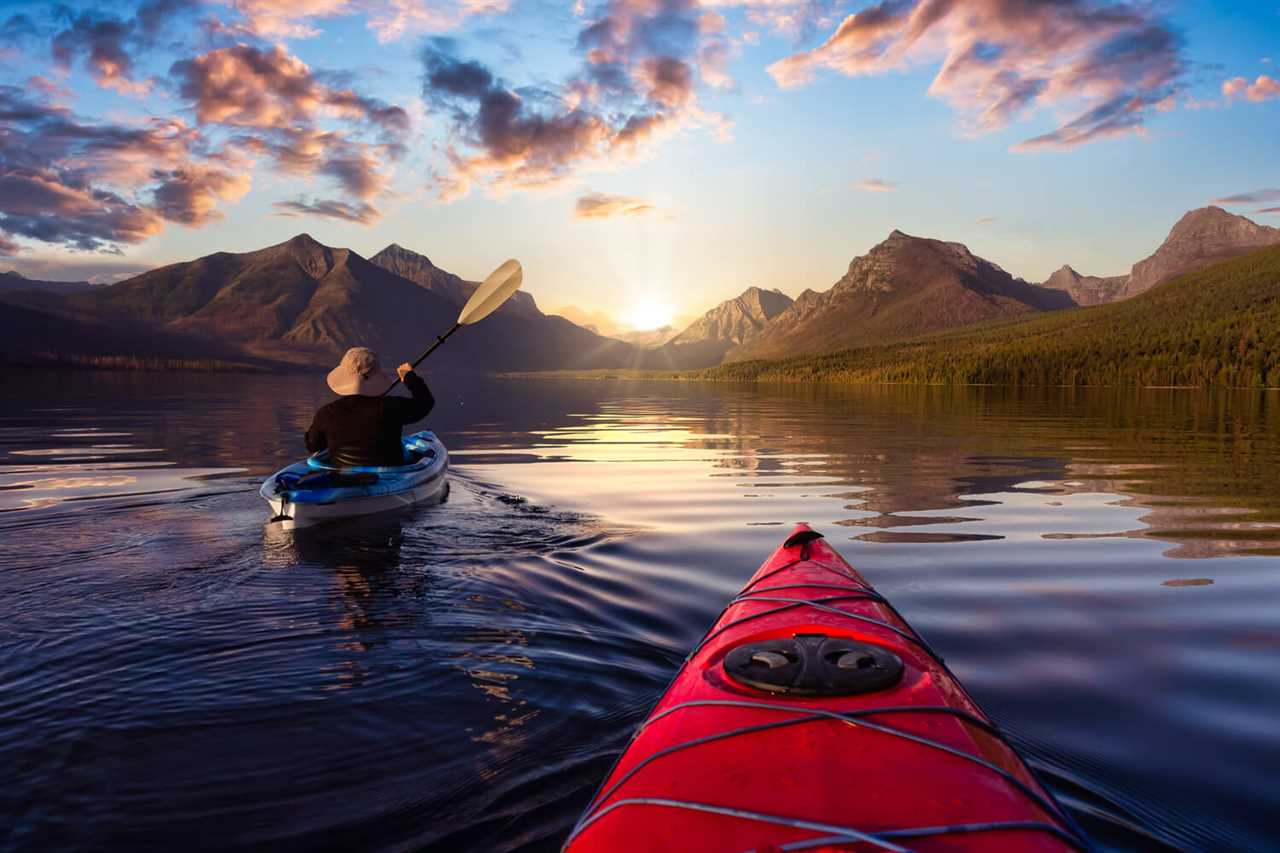
Photo by EB Adventure Photography via Shutterstock
Lake McDonald, Bowman Lake, Two Medicine Lake, St. Mary Lake, and Swiftcurrent Lake are great opportunities to enjoy a leisurely float on a kayak or canoe. Rentals are available at concessionaires at Lake McDonald, but you’ll need to bring your own kayak for other locations.
If you’re looking for more of a thrill, you can take a rafting tour on the Flathead River. Don’t let the cold waters keep you from leaving the shore and enjoying the activities that Glacier’s lakes and rivers can offer.
Check the park’s website for the latest information on boating regulations, rental availability, and more.
Fishing
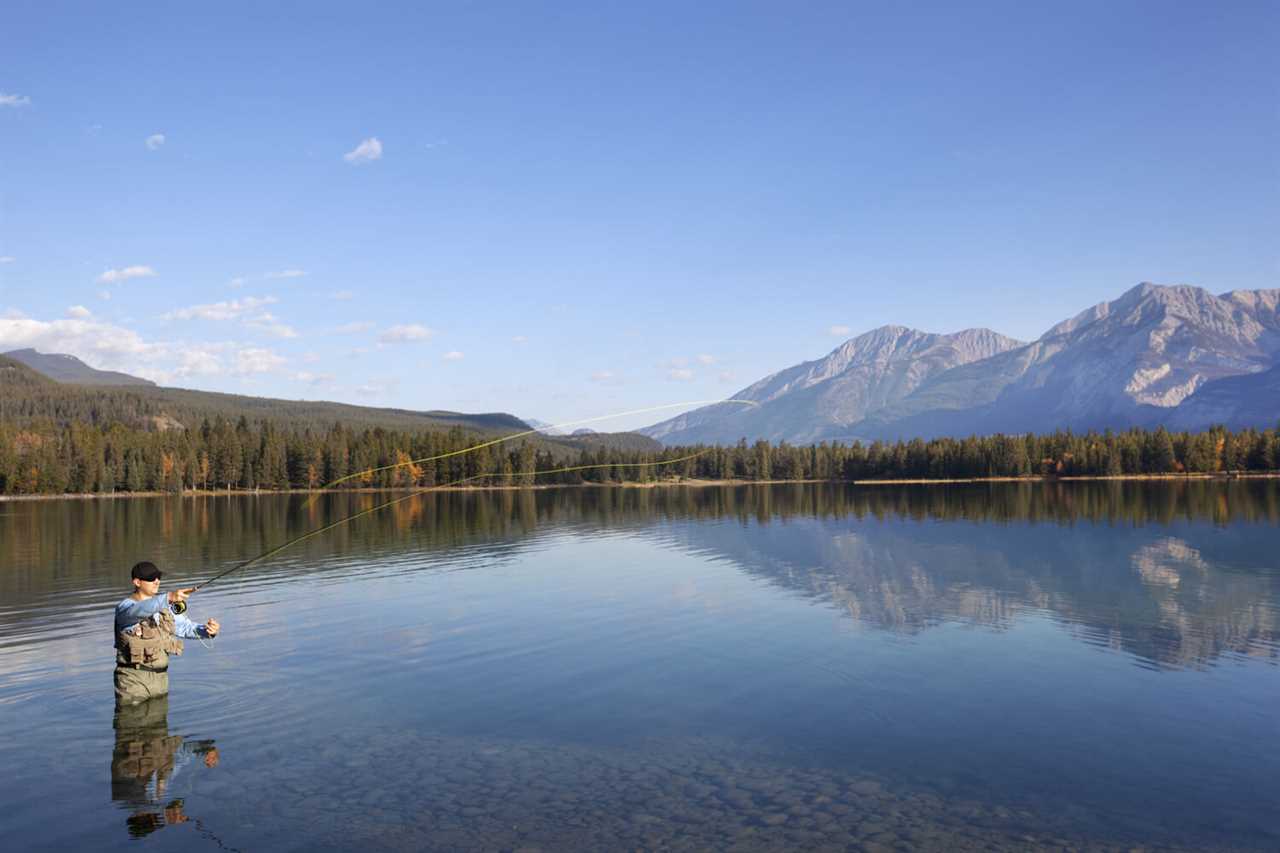
Photo by M Thatcher via Shutterstock
The abundance of water also offers great fishing in Glacier National Park. Whether you like lake fishing, fly fishing, or even ice fishing, the park has it all. Be sure to review the NPS website for the park’s regulations, limits, and other information, including the types of fish in the area and the best bait and equipment to use.
Get Lost in a Winter Wonderland
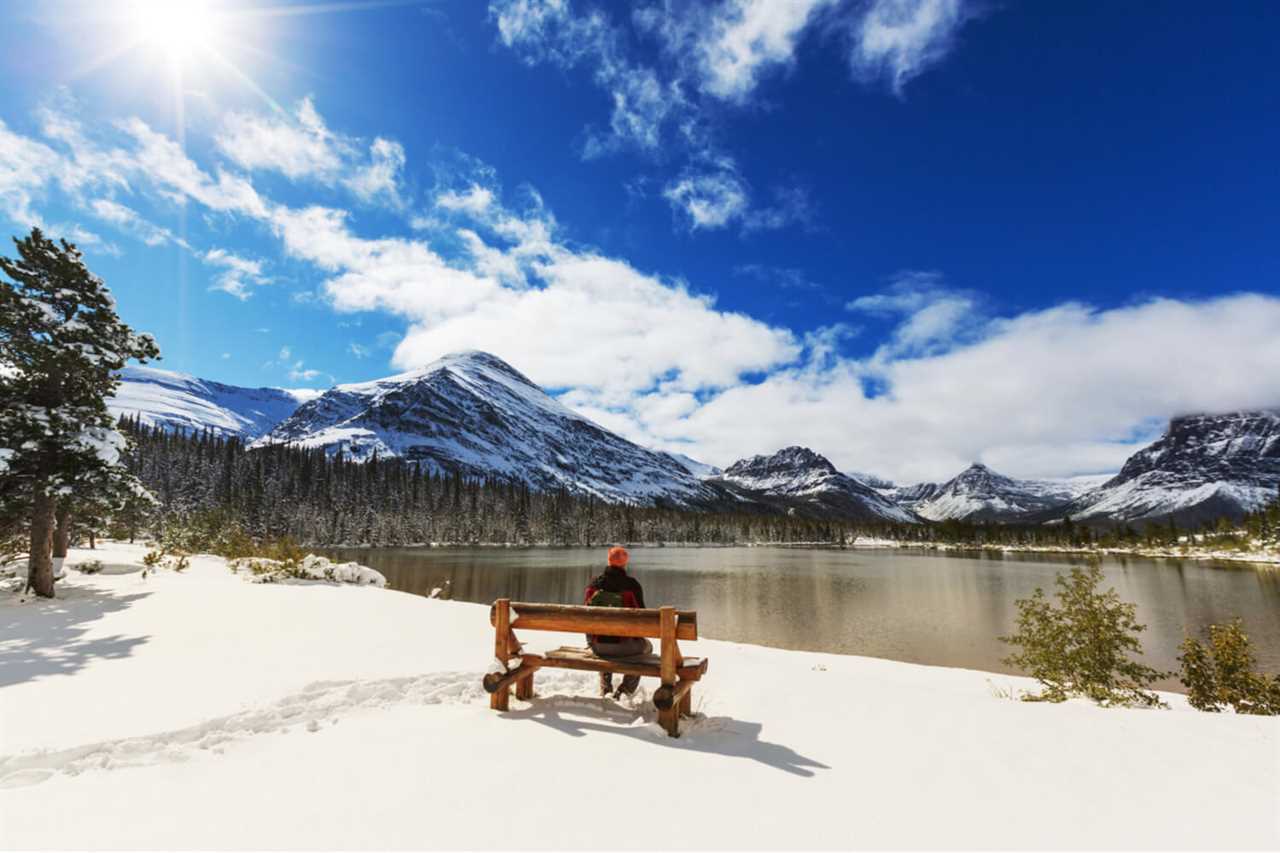
Photo by Galyna Andrushko via Shutterstock
Ski and snowshoe trails throughout Glacier offer the same great views with fewer crowds. If you’re okay battling the colder temperatures, wintertime in the park can be truly serene. The park rangers offer guided snowshoe weekend tours, as many routes aren’t marked.
What to Bring and How to Prepare
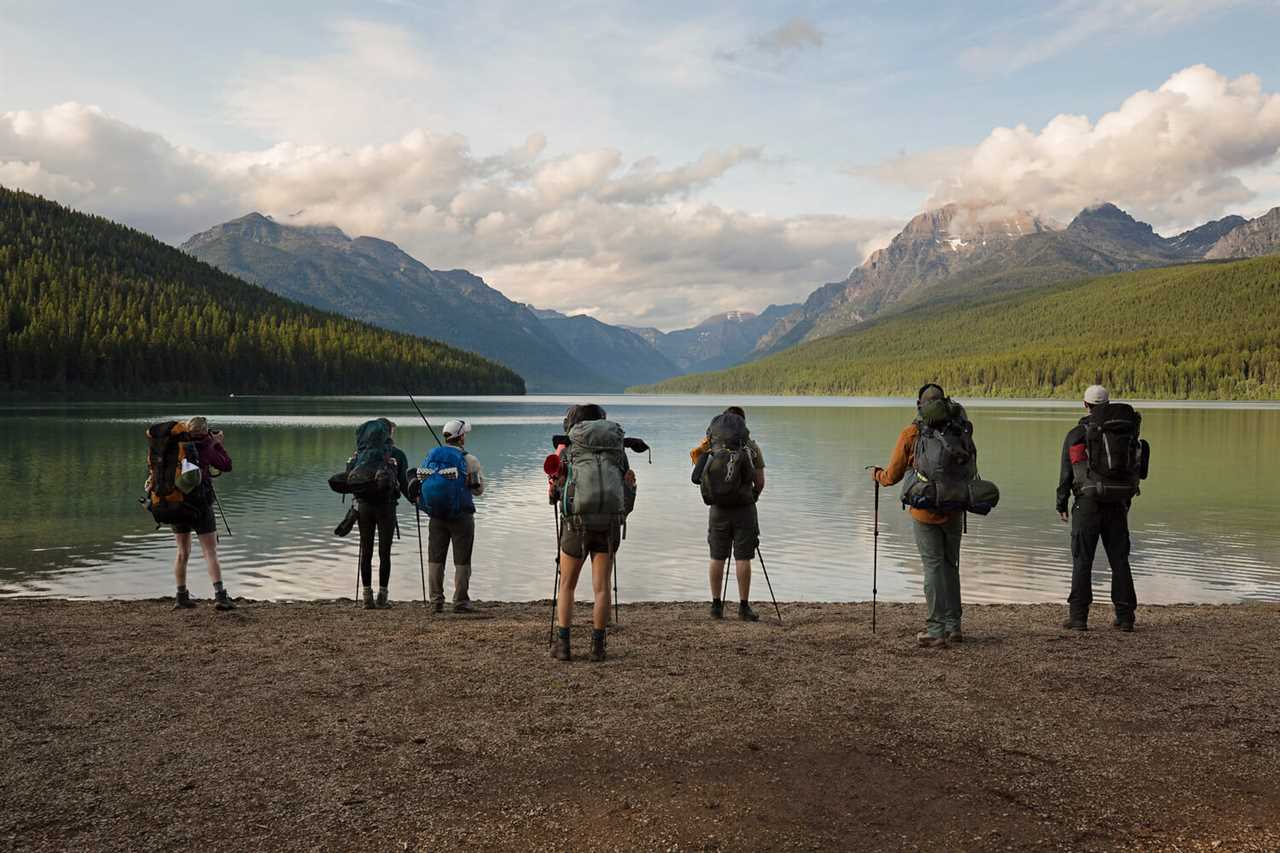
Photo by Patricia Thomas via Shutterstock
- Be bear-aware. Since much of the park is only open for part of the year, bears aren’t as used to tourists being in their territory. Carry bear spray, hike in large groups, make noise to warn bears of your presence, and always properly store your food and trash.
- Know where services are located. Stores with limited supplies are open seasonally in Apgar Village, Rising Sun, Two Medicine, Many Glacier, and at Lake McDonald Lodge. Check the park’s website for other services by location.
- Prepare for little to no cell service. Limited service can be found at St. Mary and the Apgar/West Glacier area. Wi-Fi is available at visitor centers. Consider a cell signal booster if service is essential during your stay.
- Check your RV furnace. Even during the summer, overnight temps can get chilly. Make sure your furnace is in good working order before your visit.
- Be aware of pet regulations. Pets must be kept on a leash in campgrounds and developed areas but aren’t allowed on park trails. Use the term Flathead Valley Kennels if you need a full-service pet boarding solution while you go hiking.
- Enjoy huckleberry ice cream. Don’t leave without getting at least one scoop of huckleberry ice cream from the store in Apgar Village. You can even find opportunities for huckleberry picking in late summer!
Brief History of Glacier National Park
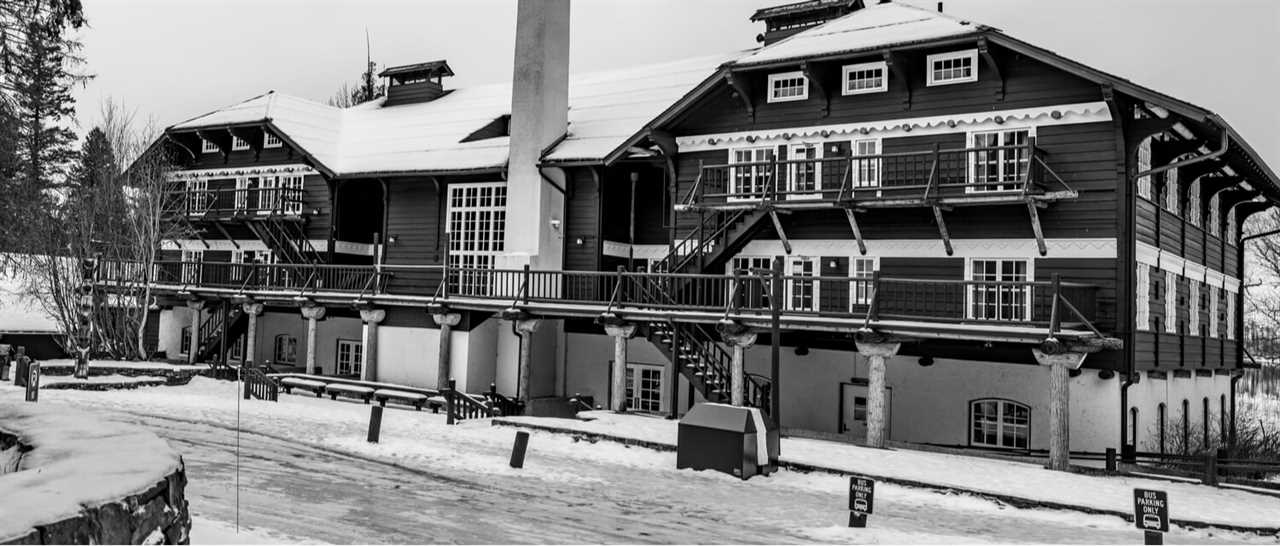
Photo by Mark Peugh via Shutterstock
Glacier officially became the country’s 10th national park when President Taft signed a bill to establish the park in 1910. But advocates like George Bird Grinnell–an American anthropologist, naturalist, historian, and writer–had been pushing for the park’s creation since the late 1800s.
Human presence in the region, however, can be traced back more than 10,000 years. By the time the first European settlers discovered the region, the Blackfeet, Salish, and Kootenai tribes were the area’s primary human inhabitants.
The Blackfeet controlled the vast prairies that stretch east from the park’s mountains. The Kootenai and Salish lived in the valleys on the western side of the mountains but traveled over the mountains seasonally to hunt bison and other game on the eastern plains.
The completion of the Great Northern Railway in 1891 vastly altered the area’s sociocultural environment. It brought aspiring homesteaders from the east, and the population of European settlers grew dramatically.
While mining and mineral extraction was big business in the area throughout the late 1800s, the turn of the century brought an attitude change. People began to look at the landscape for its value beyond what minerals could be extracted, and we can still thank Grinnel and other influential leaders of the time for protecting what is truly one of the most magnificent landscapes in the country.
Plan your next trip to the national parks in an RV. Rent an RV, trade-in your RV, or buy an RV.
Have you been to Glacier National Park? What tips can you share?
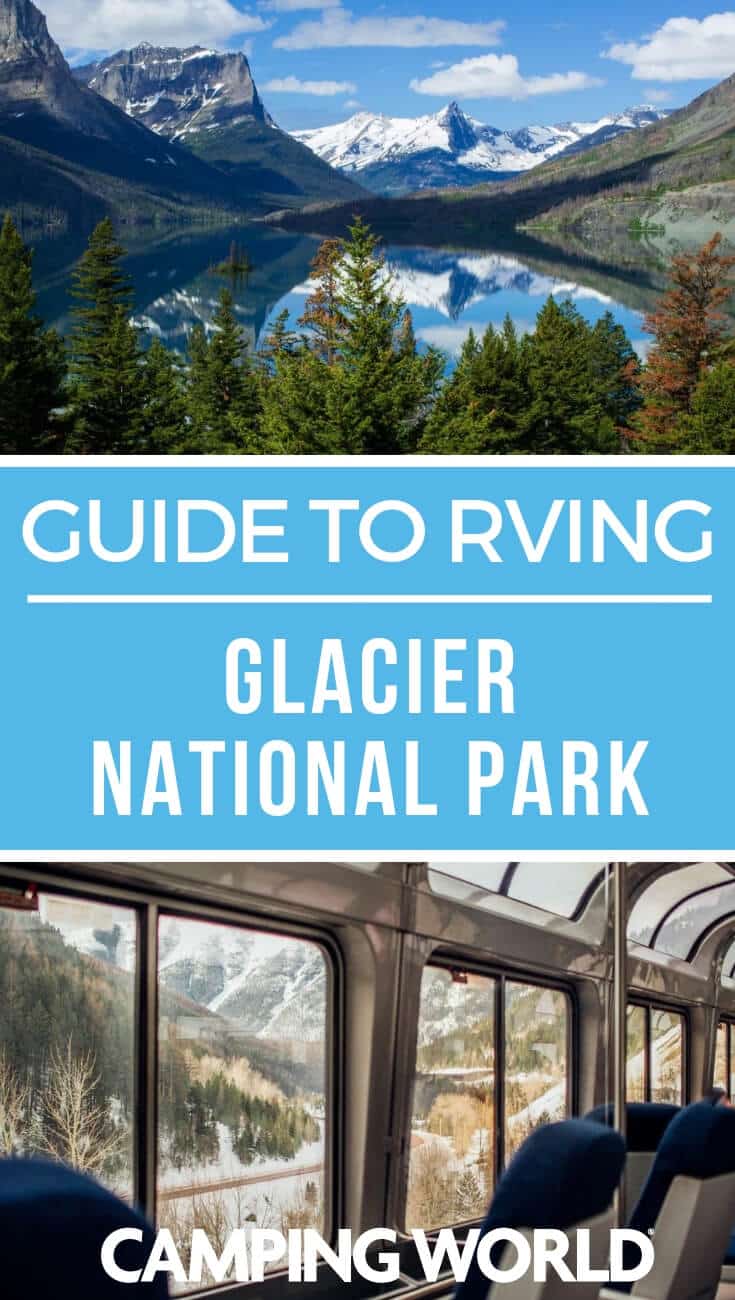
By: Tucker Ballister
Title: Camping World’s Guide to RVing Glacier National Park
Sourced From: blog.campingworld.com/the-rv-life/where-to-go/camping-worlds-guide-to-rving-glacier-national-park/
Published Date: Fri, 17 Jun 2022 18:30:22 +0000
---------------------------------------------
 CampingSurvivalistHuntingFishingExploringHikingPrivacy PolicyTerms And Conditions
CampingSurvivalistHuntingFishingExploringHikingPrivacy PolicyTerms And Conditions
